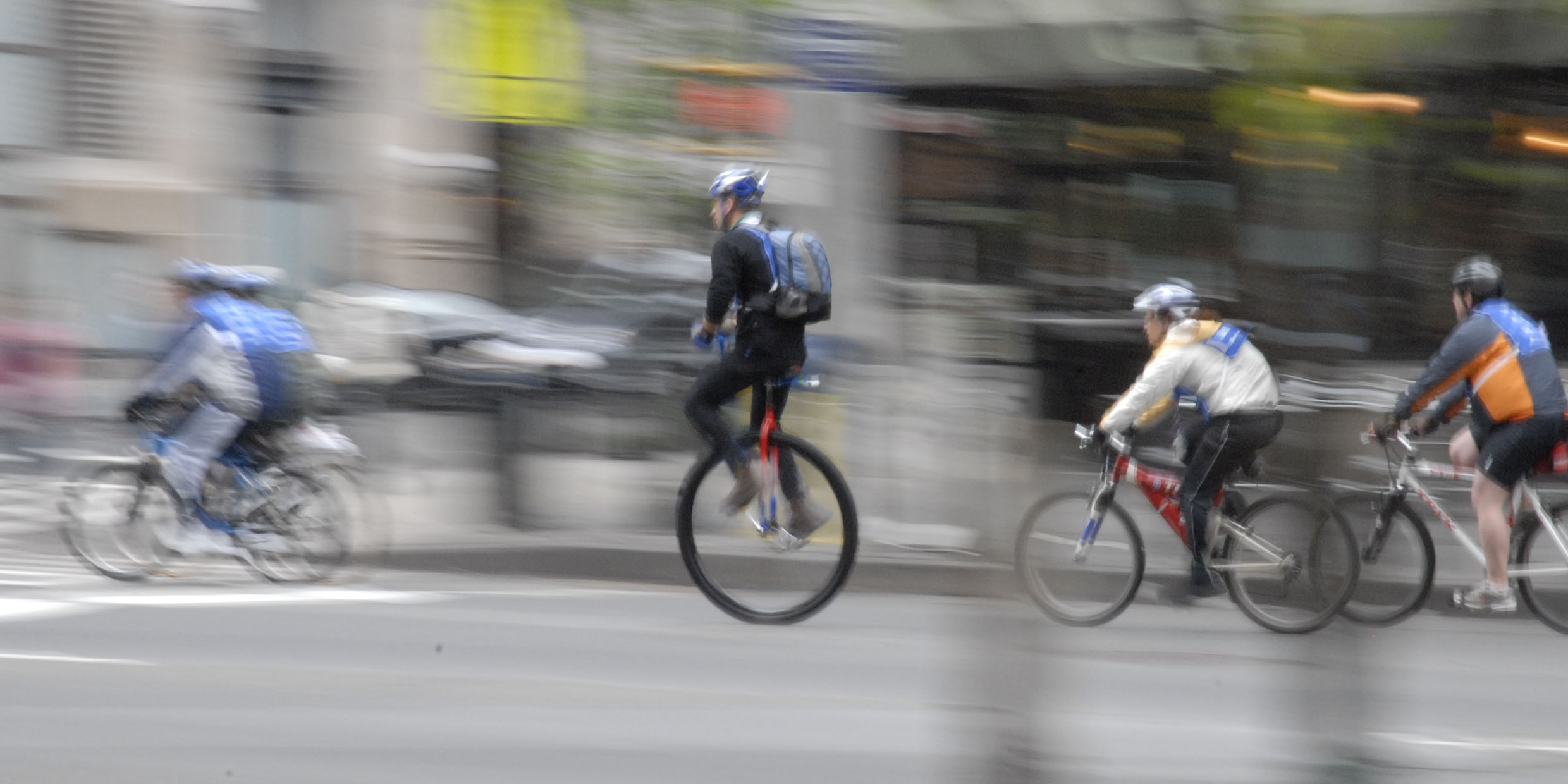Originally published 29 November 1993
Inchworms inch. Whirligigs whirl. Sidewinders wind. Grasshoppers hop.
It’s called getting around, and the animal kingdom has devised a thousand ways to do it.
Fleas have springs in their legs that store up energy and then release it explosively with a trigger mechanism.
Hovering insects do a thing with their wings called “clap and fling.”
Bushbabies leap from tree to tree with their bushy tails as balance.
Animals swim, fly, creep, slither, glide, slide, and walk on water. The only mode of transport not widely exploited by nature is the wheel, at least not this side of Dr. Seuss.
Why not? There is no more efficient way for humans to travel than on a bike. Why didn’t creatures evolve that were a cross between humans and bicycles? Bicyclus sapiens.
The answer, as biology teachers will tell you, has to do with the nature of the wheel.
A wheel (and its cousin the propeller) must turn freely and continuously about its axle. But animals need connections between their parts for the transfer of nutrients, blood, and nerve impulses. Continuous rotation would not appear to be an option for evolution.
As it happens, nature did invent the continuously turning wheel. Certain bacteria swim by spinning a single whiplike flagellum. This tiny appendage is attached to a base that fits into a cavity in the bacterium’s body, and — astonishingly — it spins continuously, driven by a biochemical motor.
How is this possible? Nutrients move between the bacterium and its rotating appendage by diffusion: that is, molecules drift across the gap.
This works only for bacteria-sized creatures, says biologist Stephen Jay Gould. As an animal’s parts gets bigger, the ratio of surface area (length squared) to volume (length cubed) decreases. Diffusion, which depends on surfaces, can no longer supply the larger volumes with nutrients. Physical connections — pipes and wires, if you will — are necessary.
Dr. Seuss’s fish with a “pinwheel-like tail” is impossible.
But perhaps Gould is excessively pessimistic about nature’s limitations. Continuously-spinning electric motors have commutators to pass electricity between rotor and housing. Certain chemical reactor vessels use something called positive-pressure mechanical seals to transmit lubricants and coolants from bearings to axle. It is difficult to imagine how such things might be implemented biologically, but what human engineers can accomplish is surely possible — in principle — for nature.
Anatomist Michael LaBarbera has suggested that the main reason evolution eschews rotation is adaption to environment, rather than any intrinsic biological limitation. Wheels and propellers, says LaBarbera, aren’t necessarily the best ways to get around.
For animals in water and air, the flapping of a flexible foil (a fish’s tail or bird’s wing) is a more efficient propulsive mechanism than a rotary propeller. Propellers on ships are about 60 percent efficient at converting power to thrust. A typical aircraft propeller is about 80 percent efficient. Oscillating flexible foils, according to LaBarbera, can reach efficiencies of 96 percent. Flapping is better than propellering.
Wheels also have limited advantages for land organisms. A wheelchair is an efficient mode of transport, but a six-inch-high curb can be an insurmountable obstacle. A bicycle is the most energy-efficient of all terrestrial modes of human transport, but only on hard, smooth, unrestricted terrain. There are few natural environments where wheels are the best way to travel.
However, if the Earth’s surface were hard, flat and smooth, who knows what evolution might have brought forth? LaBarbera writes: “Whenever rotating systems are a feasible mode of transportation, organisms have evolved to use them.”
Consider, for example, the small marine crustacean, Nannosquilla decemspinosa, that is found on sand beaches of the Pacific coast of Panama. Adults of this species have short laterally-projecting legs, and cannot walk when out of water. Cast up on the sand by waves, they move along by backwards somersaults. For nearly half of each somersault cycle, their curled-up bodies roll along the hard, smooth sand.
Nannosquilla decemspinosa solves the problem of continuous rotation by making its whole body a wheel and doing away with the axle. This little organism demonstrates the wondrous creativity of natural selection.
What Dr. Seuss imagined may not, after all, be impossible. Perhaps on a smooth-skinned planet near another star evolution got off to a more rotary start and has perfected fish with pinwheel-like tails.
Who knows? When E.T. arrives in its flying saucer it may come freewheeling down the ramp on spinning appendages.



